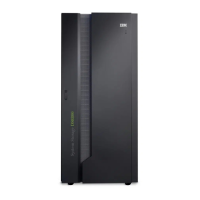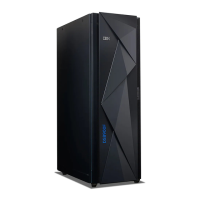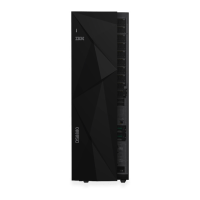storage servers that are located at some distance from each other. Second, and
more significantly, remote mirror and copy does not capture the state of the source
volume at some point in time, but rather reflects all changes that were made on
the source volume to the target volume.
Metro Mirror
Metro Mirror functions offer a synchronous long-distance copy option that
constantly updates a secondary copy of a volume to match changes made to a
source volume.
With Metro Mirror copying, the source and target volumes can be on the same
storage unit or on separate storage units. You can locate the storage unit at another
site some distance away. Synchronous mirroring means that each update to the
source storage unit must also be updated in the target storage unit before another
update can process. When Metro Mirror receives a host update to the source
volume, it completes the corresponding update to the target volume. This
guarantees data consistency by ensuring that a write operation that completes is
received by the host application after the update has been committed to the target
storage unit and acknowledged by both the source and target storage units.
(Typically, the target volumes are on a different storage unit.) This results in near
perfect data consistency but can result in lag time between transactions.
With Metro Mirror, consistency is guaranteed across all volumes on which an
application does write operations as long as all volume pairs are in full duplex
state. When error conditions affect some of the volume pairs (or different volume
pairs at different time), this consistency might be lost. For example, if one of the
target volumes cannot be updated because a path fails, the corresponding source
volume normally goes into a suspended state, but still allows updates. However,
these updates are no longer transferred to the target volume. Only the bitmap of
changed tracks is created and maintained. So the consistency across volumes is
lost, although the order of write operations is still guaranteed for the other target
volumes.
Metro Mirror copying supports a maximum distance of 300 km (186 mi). Delays in
response times for Metro Mirror are proportional to the distance between the
volumes. However, 100% of the source data is available at the recovery site when
the copy operation ends.
The following procedure describes how data is written for a Remote Mirror and
Copy operation. A copy to the target storage unit is synchronous with the source
volume’s I/O operation.
1. An application requests a write I/O to the source storage unit. The write I/O is
written into cache and nonvolatile storage (NVS).
2. Metro Mirror sends the write I/O to the target storage unit cache and NVS.
3. The storage unit at the recovery site signals that the write operation has
completed when the updated data is in its cache and NVS.
4. When the storage unit at the production site receives notification from the
target storage unit that the write operation has completed, it returns the I/O
completed status to your application.
Global Copy
Global Copy functions offer a nonsynchronous long-distance copy option whereby
write operations to a storage unit at your production site are considered complete
before they are transmitted to a storage unit at your recovery site.
Chapter 8. Optional feature codes for the DS8000 113













